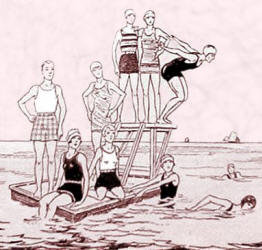 My grandmother Gertrude Grossholtz was born in Neuhausen, Germany which was part of Alsace Lorraine. The problem that I am having is determining which Neuhausen she was referring to on her marriage certificate. Is it Neuhausen ob Eck which is in Baden Wurttemberg on the southern side of the Swabian Alb. According to my sister my Grandmother was Catholic even though they brought the children up to be Lutheran. This fact would lead me to believe that she was from Neuhausen ob Eck and I have sent for information from a family history book by Hans-Georg Strizel entitled Ortssippenbuch Neuhausen ob Eck: Kreis Tuttlingen in Wurttemberg; 1633 - 1920.
My grandmother Gertrude Grossholtz was born in Neuhausen, Germany which was part of Alsace Lorraine. The problem that I am having is determining which Neuhausen she was referring to on her marriage certificate. Is it Neuhausen ob Eck which is in Baden Wurttemberg on the southern side of the Swabian Alb. According to my sister my Grandmother was Catholic even though they brought the children up to be Lutheran. This fact would lead me to believe that she was from Neuhausen ob Eck and I have sent for information from a family history book by Hans-Georg Strizel entitled Ortssippenbuch Neuhausen ob Eck: Kreis Tuttlingen in Wurttemberg; 1633 - 1920.
The history of Neuhausen ob Eck is as follows; "First settlement finds come from the late Hallstatt culture
(700-450 BC) in the form of 21 burial mounds in the won Hatzgerwiesen between
Neuhausen whether corner and Worndorf.
"Neuhausen auf den Fildern is a municipality in the district of Esslingen in Baden-Württemberg in southern Germany. It is located 13 km southeast of Stuttgart." I had an opportunity when I was visiting Langenbrand to visit this village in Baden Wuttemberg. This town had several churches and I was able to visit the church grounds as seen below. St. Urban and Vitus parish church is "located east of the main road in the middle of the village. A strong lining wall shields the church yard against the tiefergelegene road." A wedding was taking place at the time of my visit to the church and so I didn't feel comfortable entering the church.
This Neuhausen auf den Fildern was founded during feudal Germany. According to the town website ".. each community in the area had two mayors, who were responsible for the accounting department.... The inhabitants of the village were divided into two classes the community's citizens and Sojourners. Only large potatoes were harvested in the second half of the 19th century. Fields were sold for a loaf of bread." A week's salary was a loaf of bread.
The village was until 1754 ruled only by the Lords of Neuhausen. Since 1655 it was a joint sovereignty of the Lords of Neuhausen and the Lords of Rotenhan. In 1806 it became part of Württemberg.
Neuhausens was first documented in 1153 when the place was under local nobility, the Lords of Neuhausen. In the 14th century, the village under Habsburg rule and was associated with Austria. In the Reformation, all surrounding villages of Württemberg were Protestant; Neuhausen thus became a leading Austrian Catholic island. in 1769, the prince-bishopric of Speyer bought the place. The reorganization of southwest Germany by Napoléon Bonaparte first 1802 resulted belonging to the Grand Duchy of Baden, but already in 1806 Neuhausen came to the Kingdom of Württemberg. With the municipality reform of 1973,
The third village of Neuhausen Enz were my Grandmother could have come from is located in the district of Enz in Baden-Württemberg in Germany. Neuhausen is on the plateau between Nagold and Würm, also named Biet (from German Gebiet (area) between 430 and 570 metres sea level.
The so-called Biet-villages to them belong Neuhausen and its districts too were probably created as forest homestead villages. The first documentary evidence followed later: 1073 Schellbronn, 1150 Neuhausen and 1157 Steinegg. Hamberg was mentioned documentary in 1453 the first time, but it is probably Hamberg to have been created in the 11. century on initiative of a Stein von Rechtenstein. They subjected the Freiherren von Gemmingen (barons of Gemmingen).










 Liberated from long skirts, young women of the twenties wore a figure hugging wool jersey sleeveless tank suit.
Liberated from long skirts, young women of the twenties wore a figure hugging wool jersey sleeveless tank suit.









